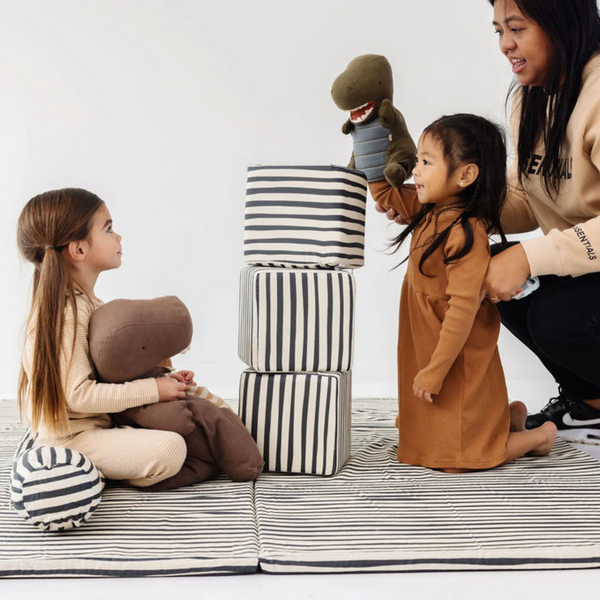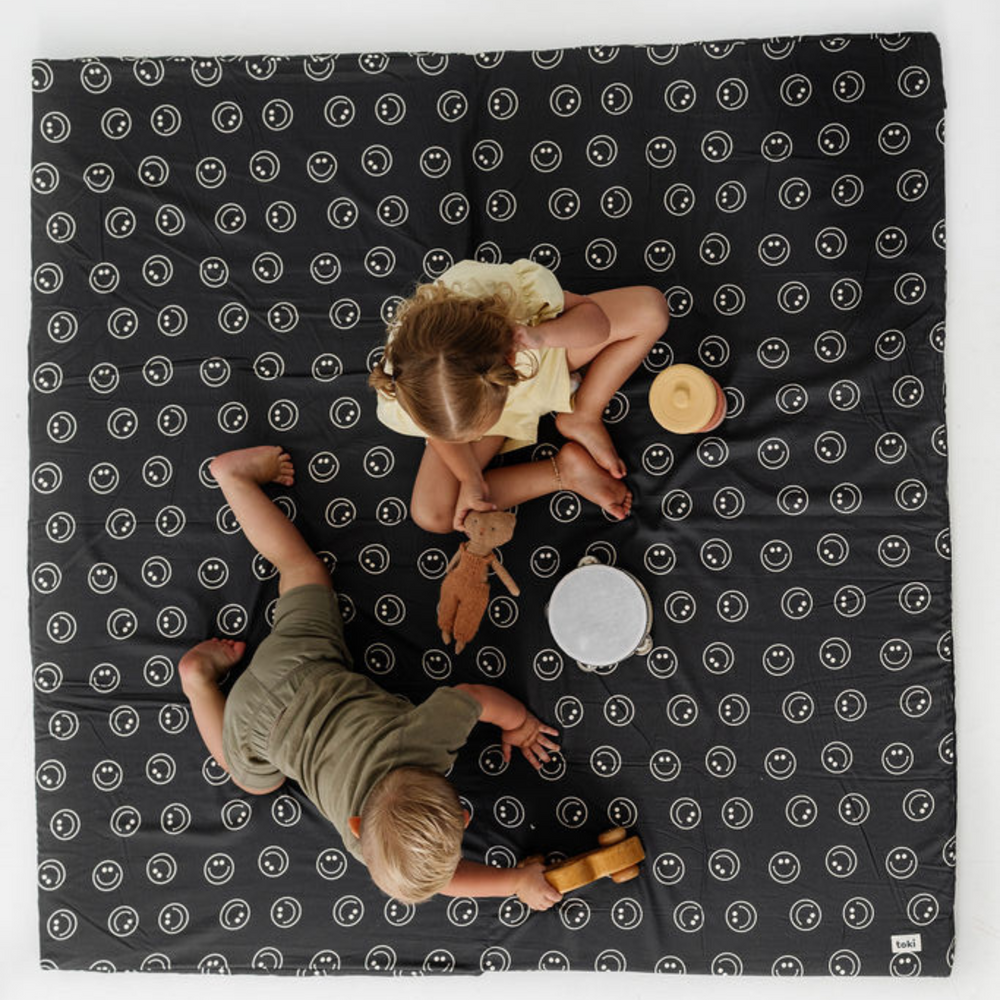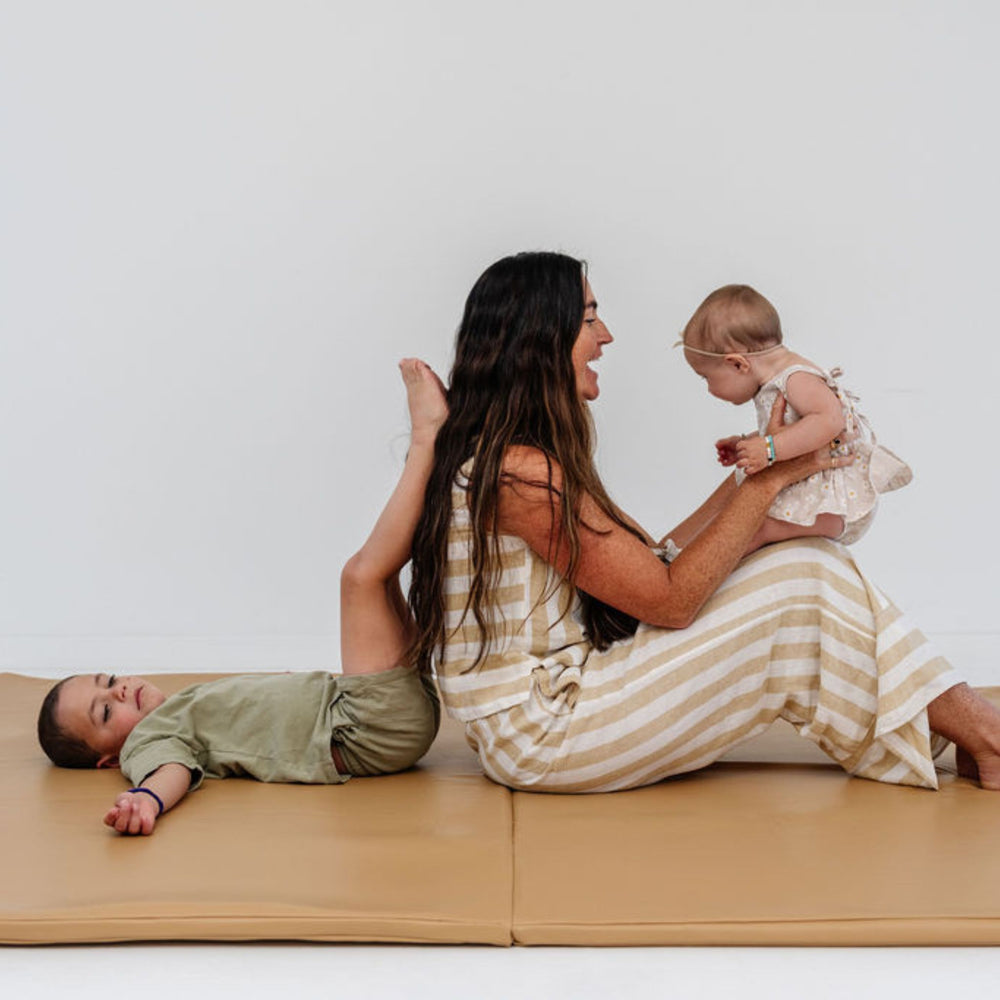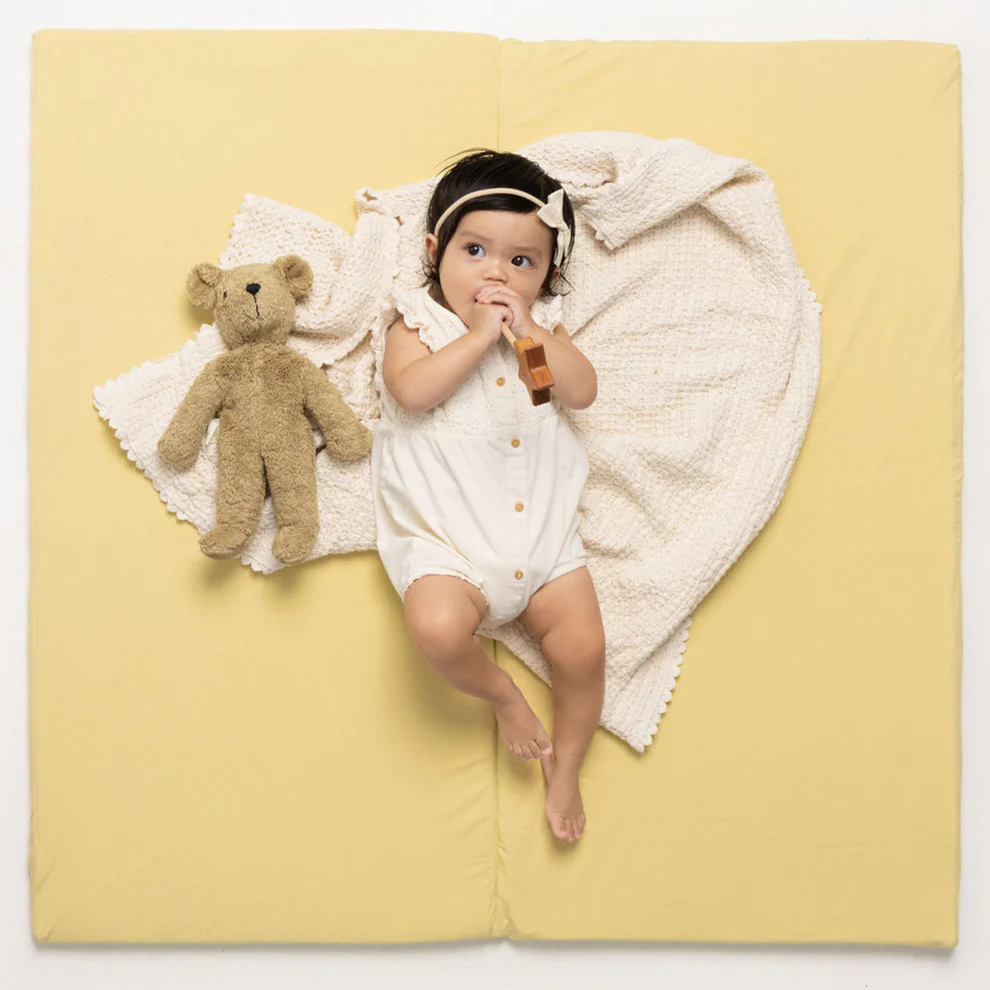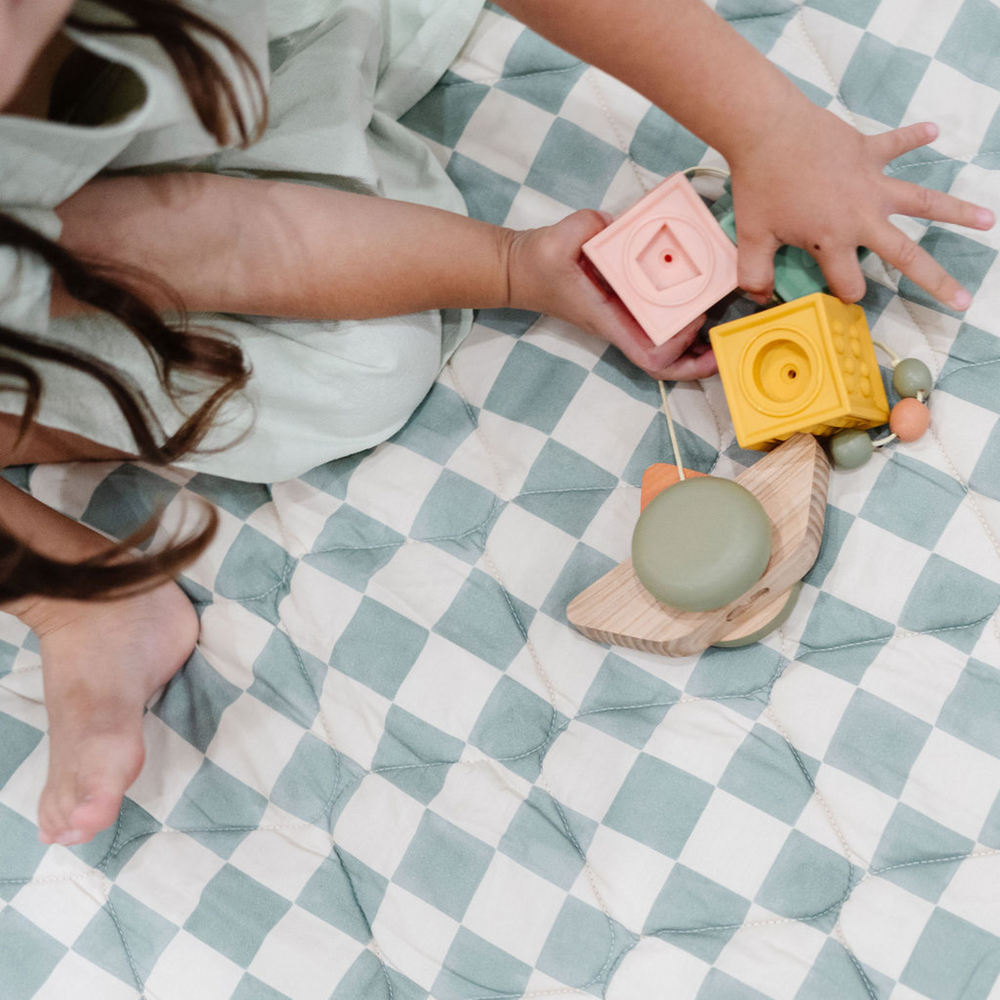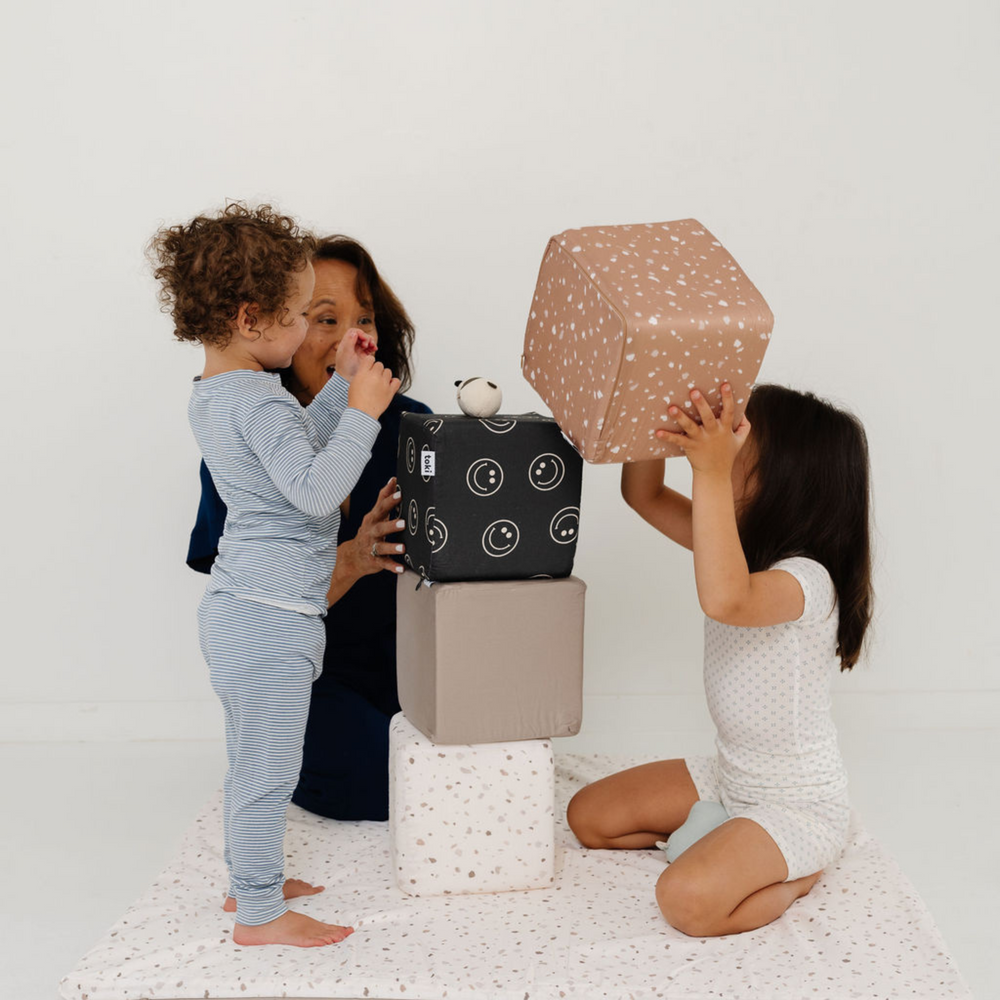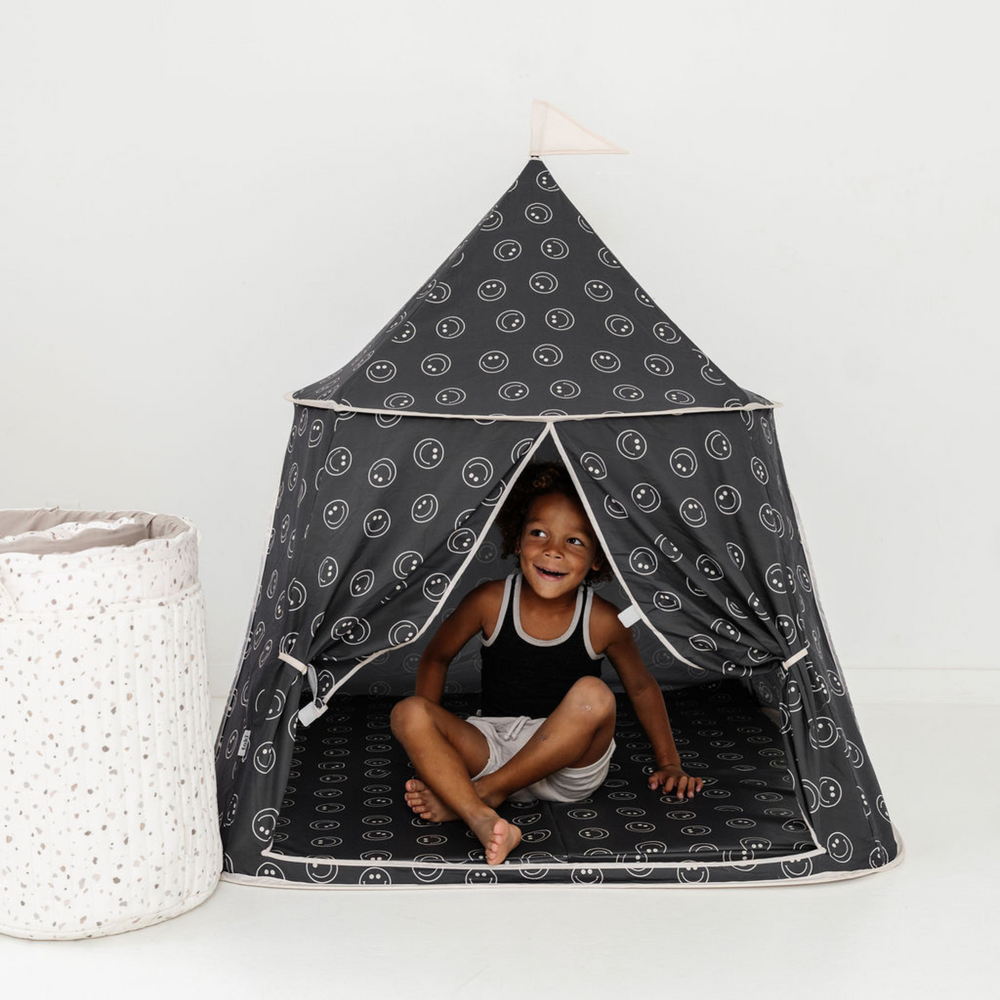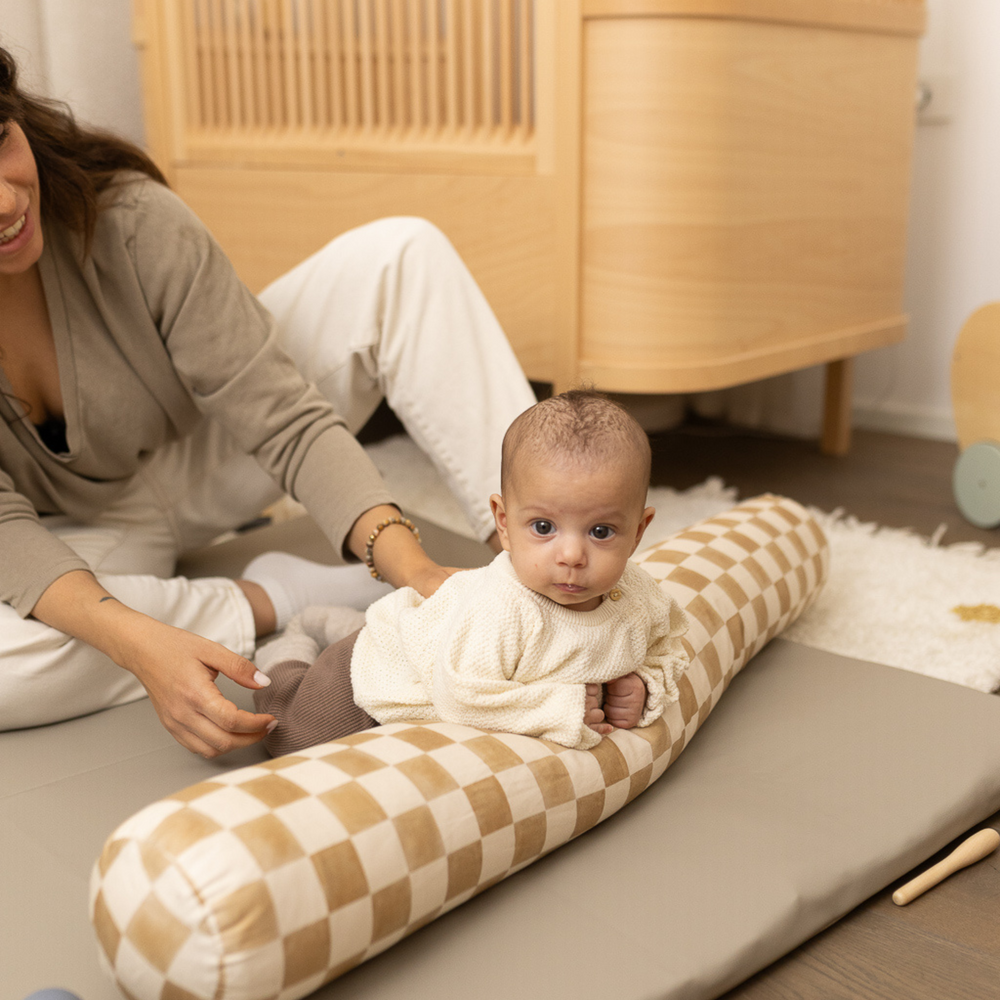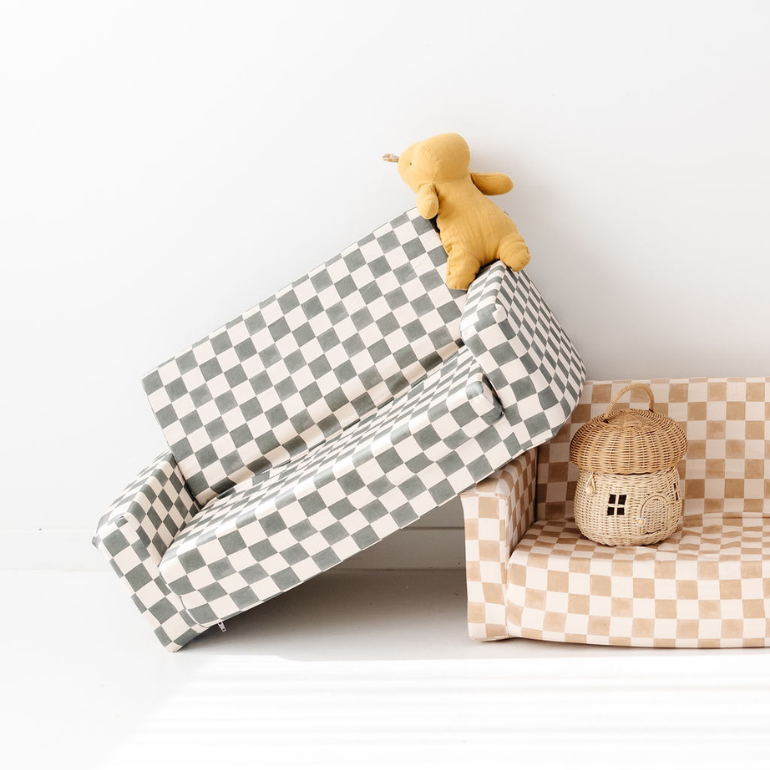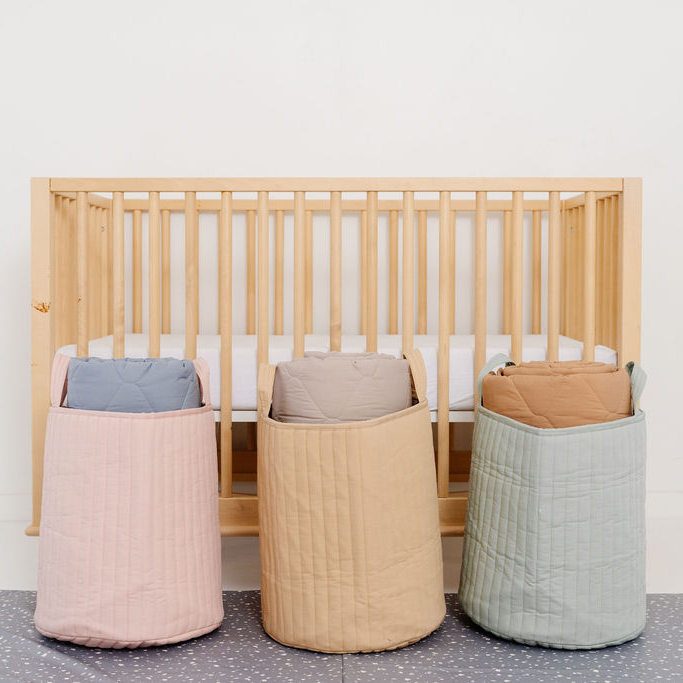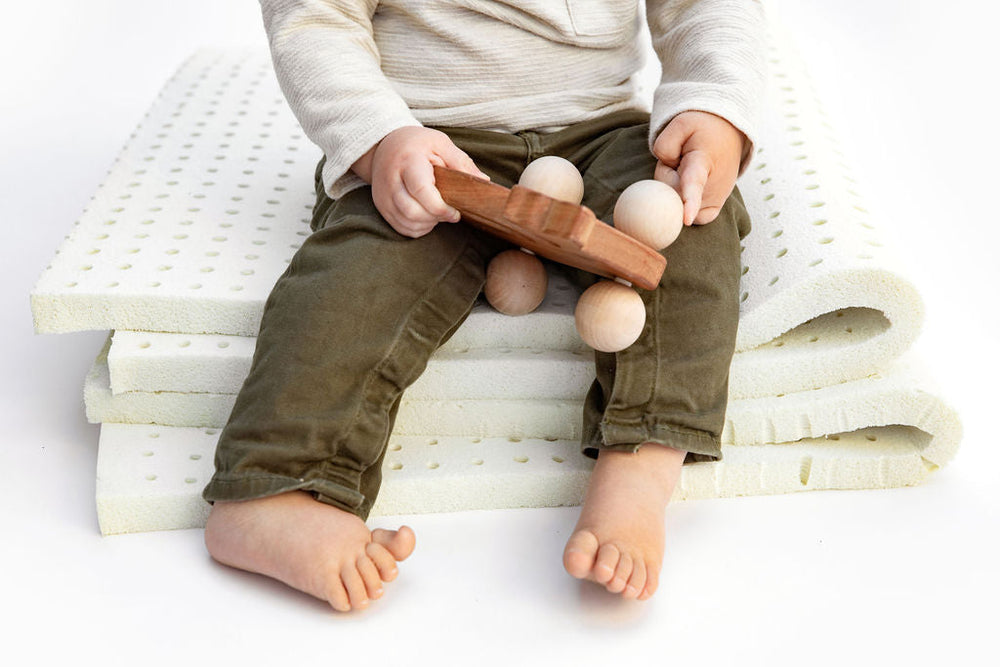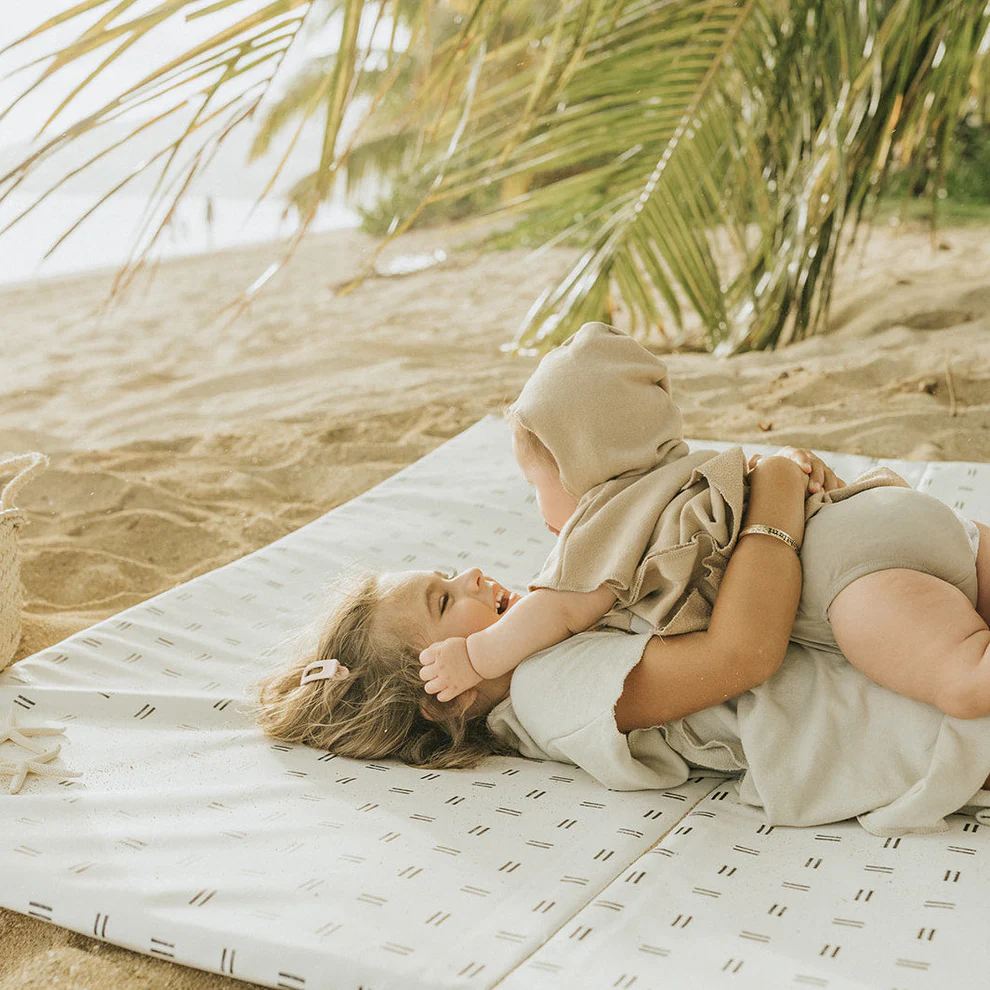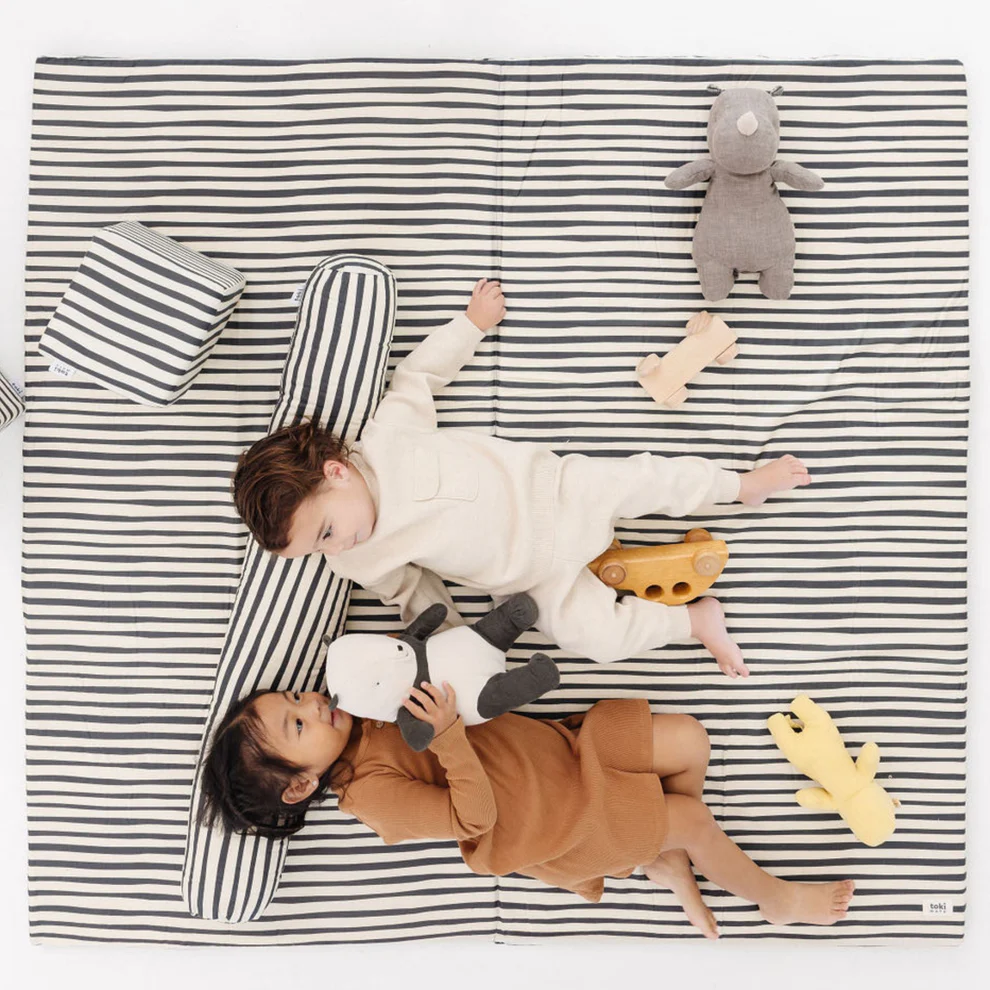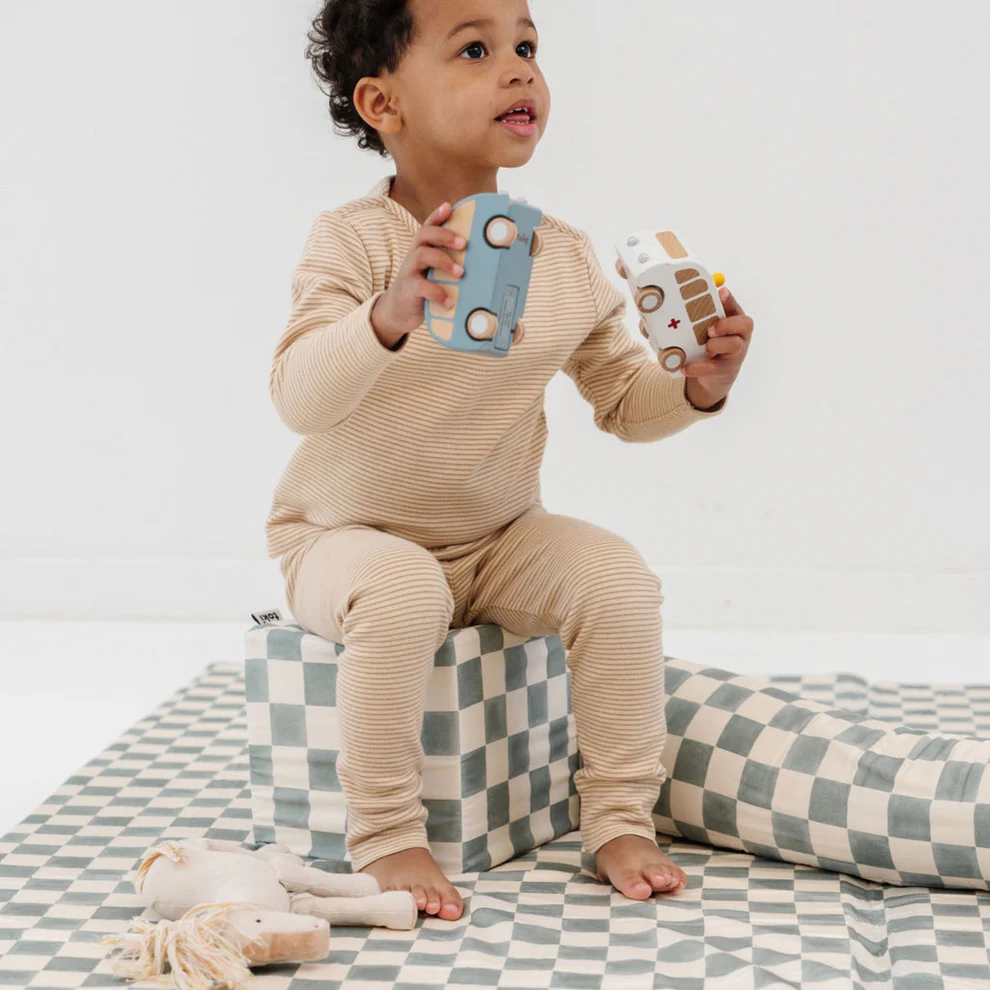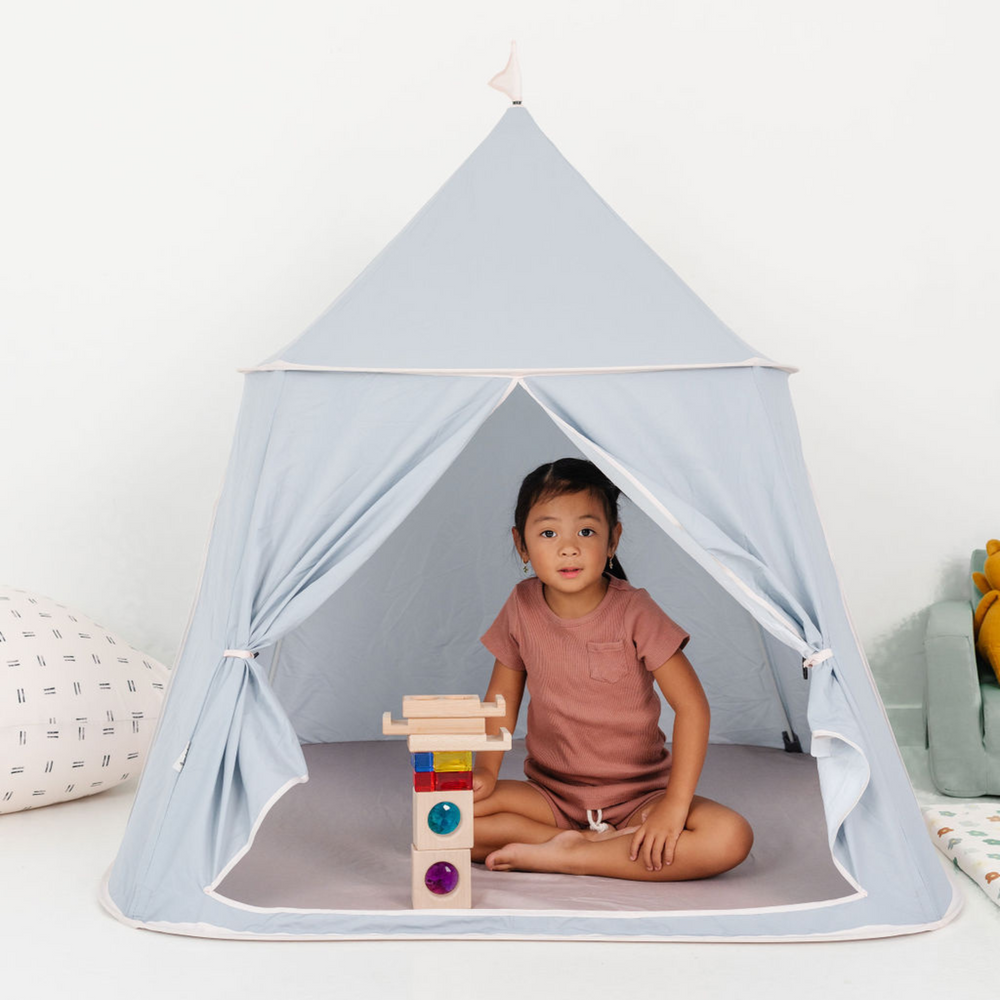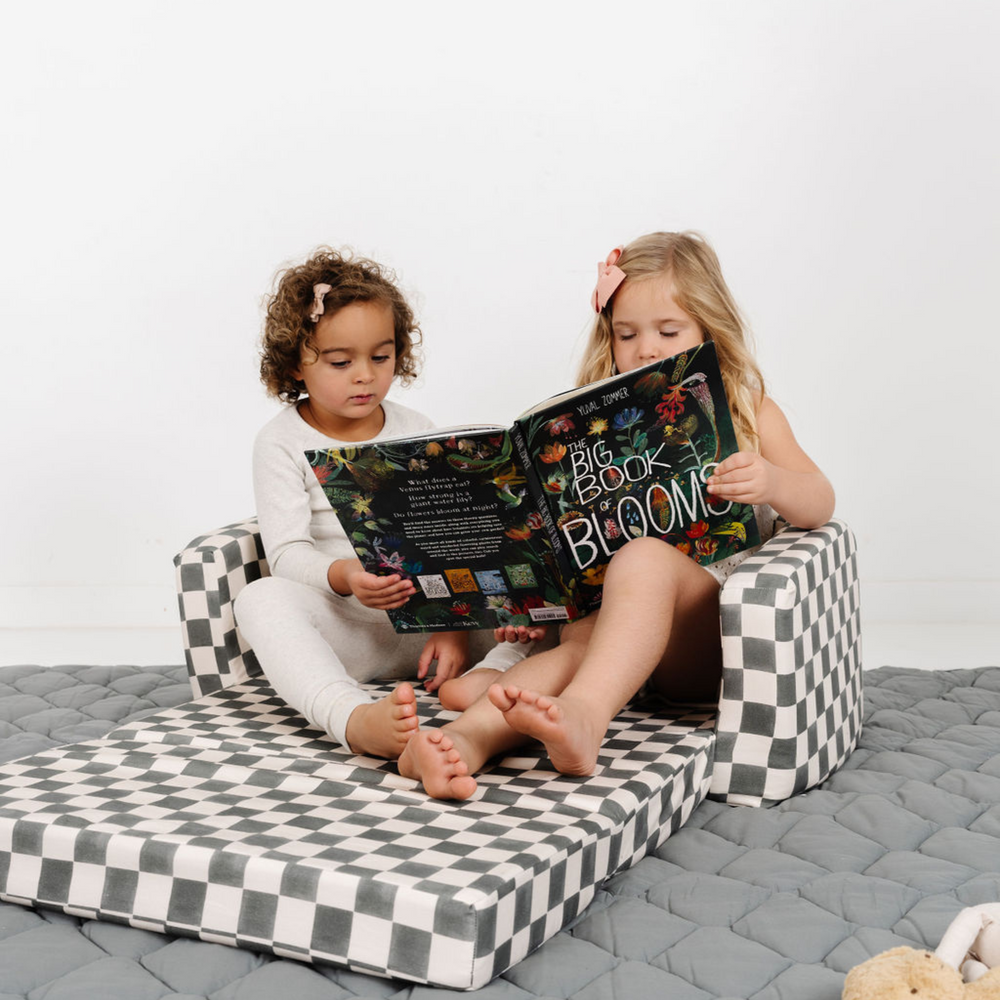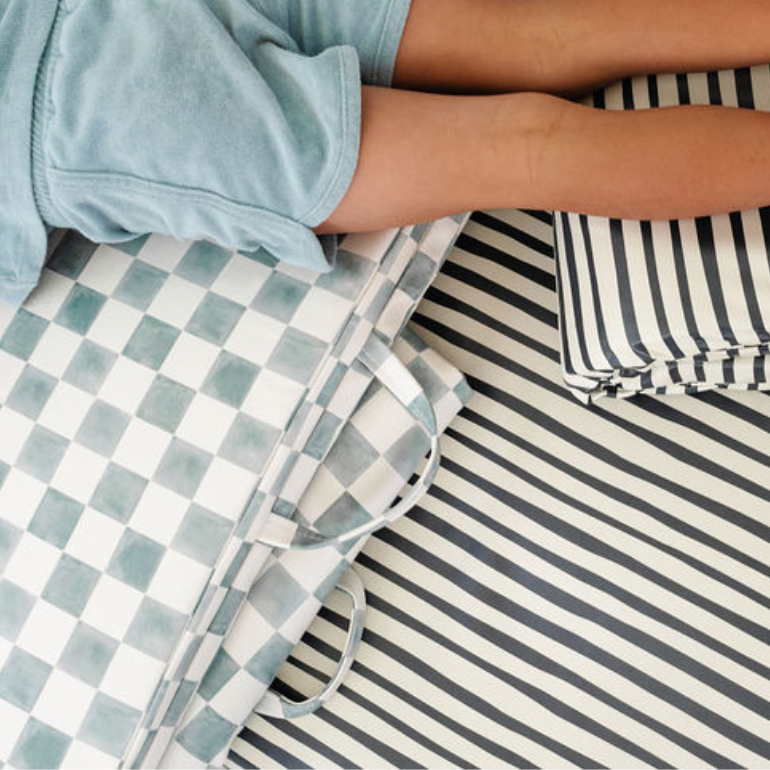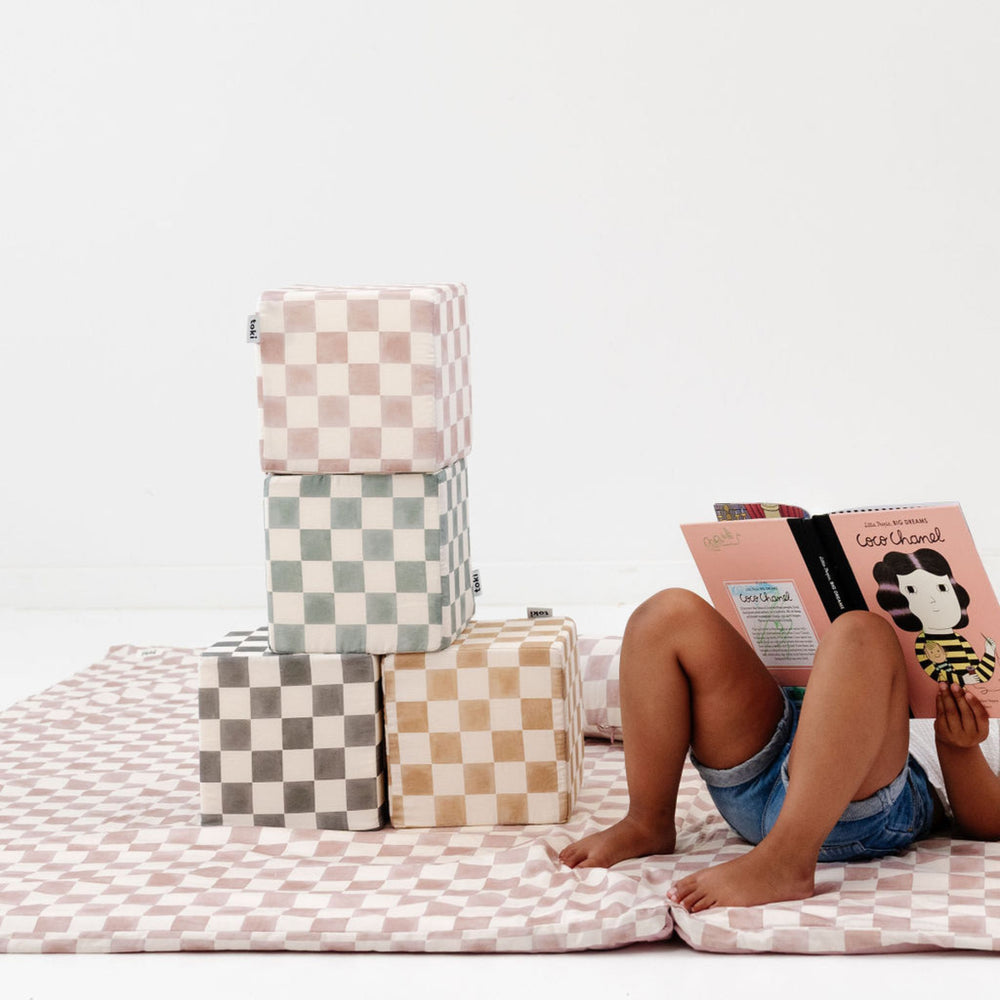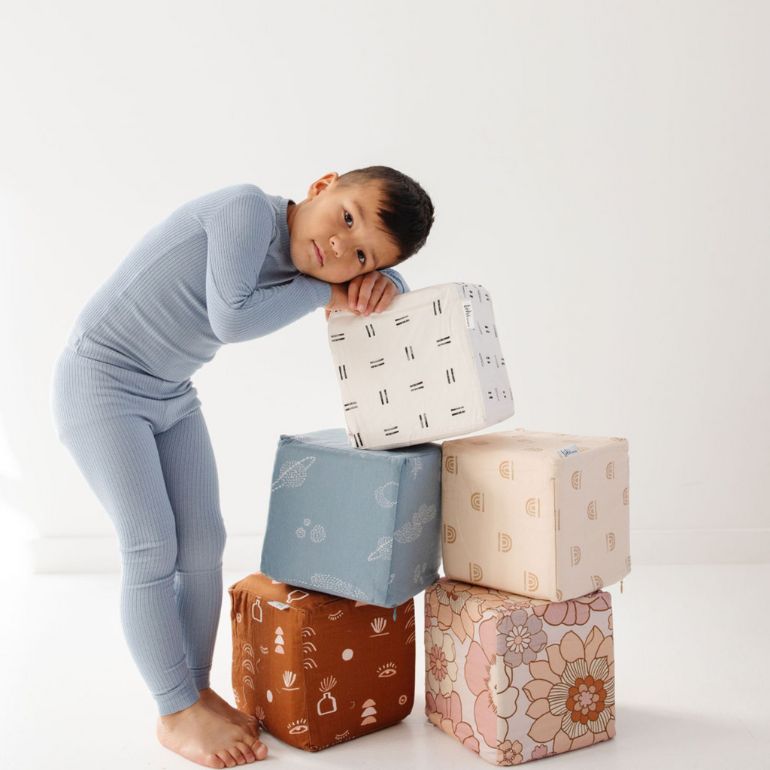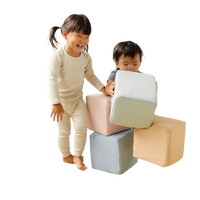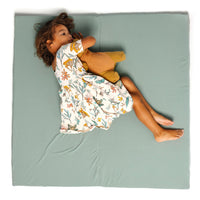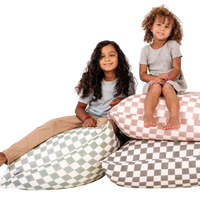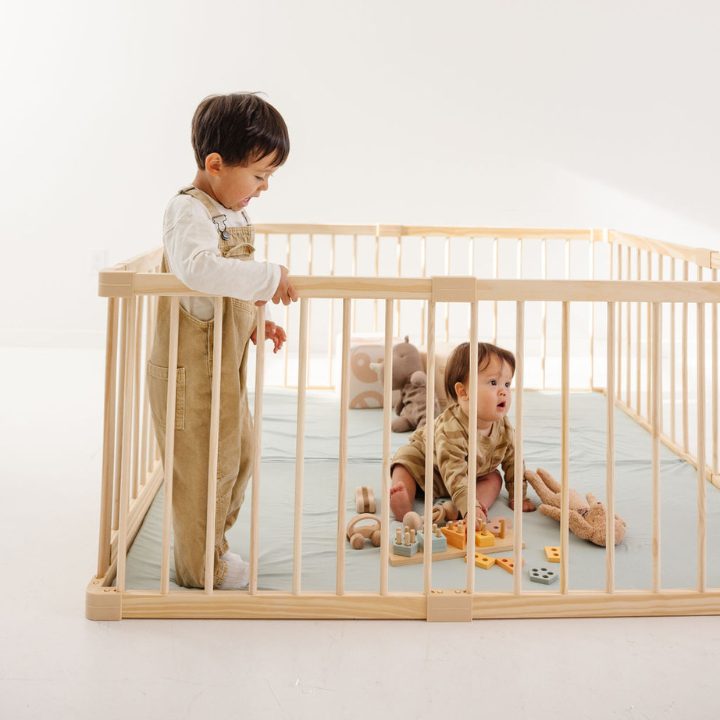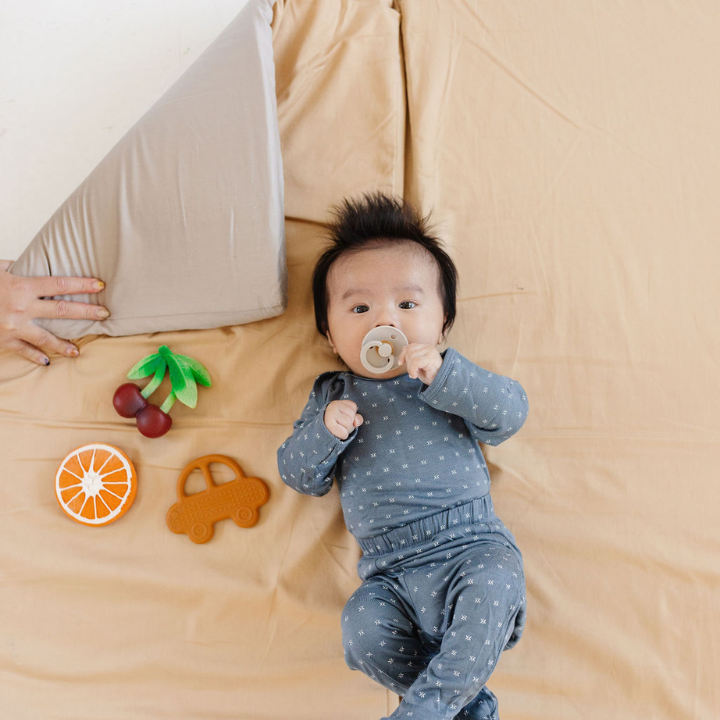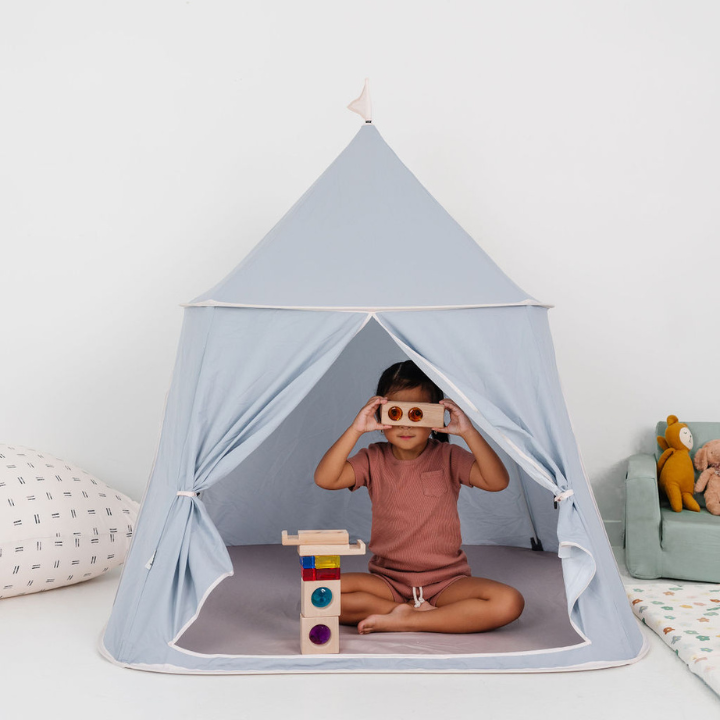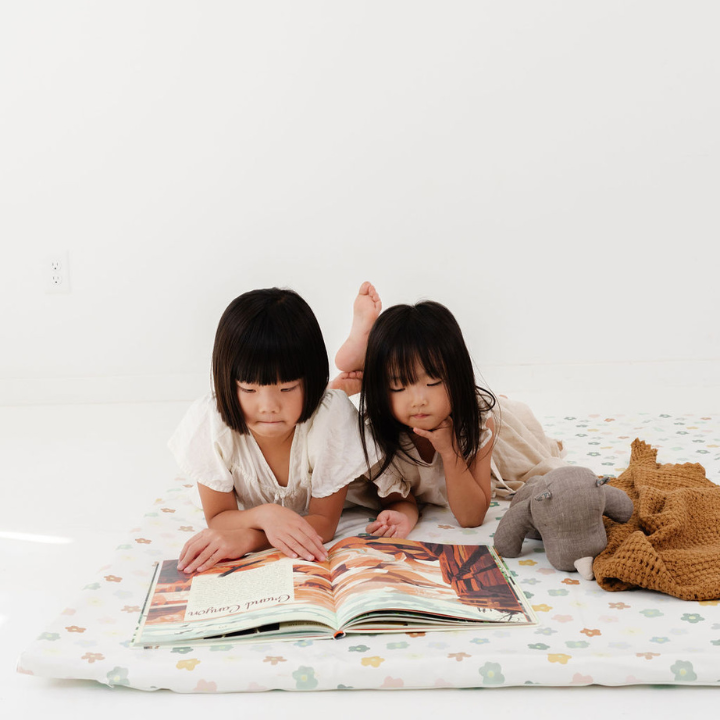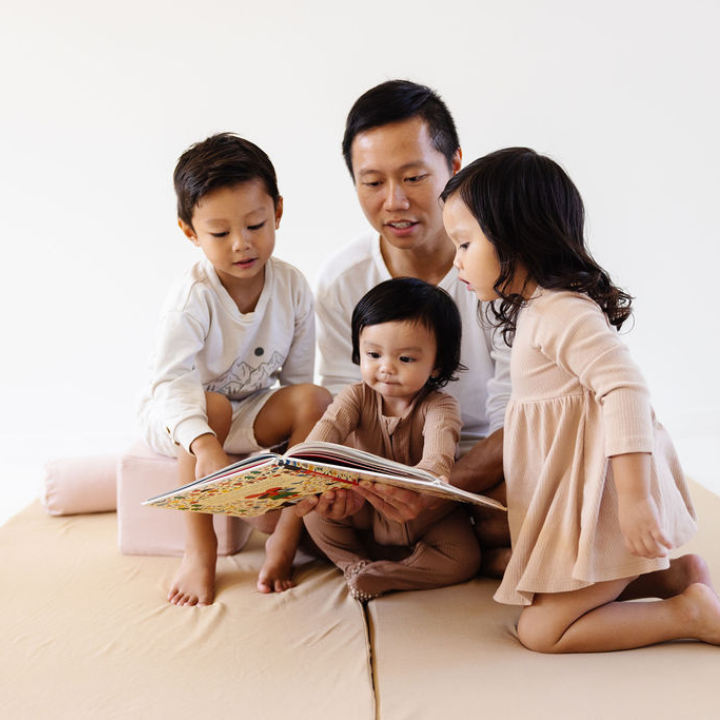All About the Stacking Milestone
April 28, 2025
In the first two years of your little one’s life, development occurs at a breakneck speed. Not only are they physically growing faster than you can keep up, sizing out of diapers and onesies in the blink of an eye, but they’re also tackling milestone after milestone. The major gross motor milestones—crawling and walking—are exciting moments, to be sure, but the smaller fine motor ones deserve just as much celebration! Learning to stack blocks requires great concentration and coordination that’s the culmination of all your baby’s development so far. Here’s everything to know about the stacking milestone:

When do babies start stacking and sorting?
Somewhere between 12 and 18 months of age, your baby will begin to understand the concept of balance. They may be able to stack two blocks on purpose around their first birthday, and begin stacking blocks to make a tower around 18 months old. Along this same timeline, your baby or toddler may also be able to stack rings back onto their peg instead of just removing them to play around 12 to 18 months, and then begin stacking them by size as they approach their second birthday.
It’s important to remember that every child develops at their own pace, so whereas one baby may begin stacking and sorting at 15 months old, another child may not until after 18 months old. Here’s a general timeline of how your child’s stacking progression may look:
-
9-12 months: One or two blocks
-
15-18 months: Two or three blocks
-
18 to 24 months: A tower of four to six blocks
-
2 to 3 years: Higher towers that are stable
-
3+ years: Complex structures
What are the benefits of stacking blocks?
Stacking is an important developmental milestone because it involves balance and coordination. To stack with precision, your child needs fine motor skills, hand-eye coordination, motor planning, and patience. As your child’s development progresses, they’ll be able to stack more blocks with accuracy.
-
Stacking develops fine motor skills. To stack toys, your child needs to grasp, lift, and place each piece precisely. This strengthens the small muscles in their hand and fingers, contributing to hand-eye coordination and dexterity.
-
Stacking encourages problem-solving. As your child experiments with stacking, they learn about balance and stability. Through trial and error, each piece is placed in a way that prevents the tower from toppling over.
-
Stacking promotes language development. As with many things, stacking blocks and toys provides an opportunity for language skills. You can narrate your actions, using words like “tower,” “blocks,” “uh-oh,” and “another,” and teach concepts like counting, colors, and sizes.


How can I help my baby learn stacking?
Your baby learns through play and repetition! After your child’s first birthday, build a tower with blocks or any other stacking toy, and encourage them to knock it down. They may get the hang of it quickly, or they may only be interested in knocking the tower over. As they get older, you can encourage them to begin stacking, even using hand-over-hand to show them how it’s done.
These toys are great for encouraging little ones to stack:
-
Blocks. Blocks are a classic toy for good reason. Whether you choose wood or silicone ones, blocks are a great toy for helping your child develop fine motor skills and hand-eye coordination. They’re a good size for your child to practice grasping and voluntary release, and require dexterity for careful placement.
-
Nesting cups. Nesting cups are a great toy to teach your child problem-solving and spatial awareness. To nest the cups, your child must experiment with different sizes and figure out how to place each cup in a way that they all fit together. Additionally, the cups can be flipped over and used as a stacking toy that requires the same skills.
-
Play cubes. Large foam cubes are especially fun for toddlers because the size makes them easier for little ones to manipulate and stack. Toki Kids play cubes are made from soft, lightweight foam that’s easy to pick up and fun to knock down.

Shop the blog
Beige Yin Yang Play Cube
$45 - $45
Let your child’s imagination reach new heights with this play cube made for safe, open-ended play.
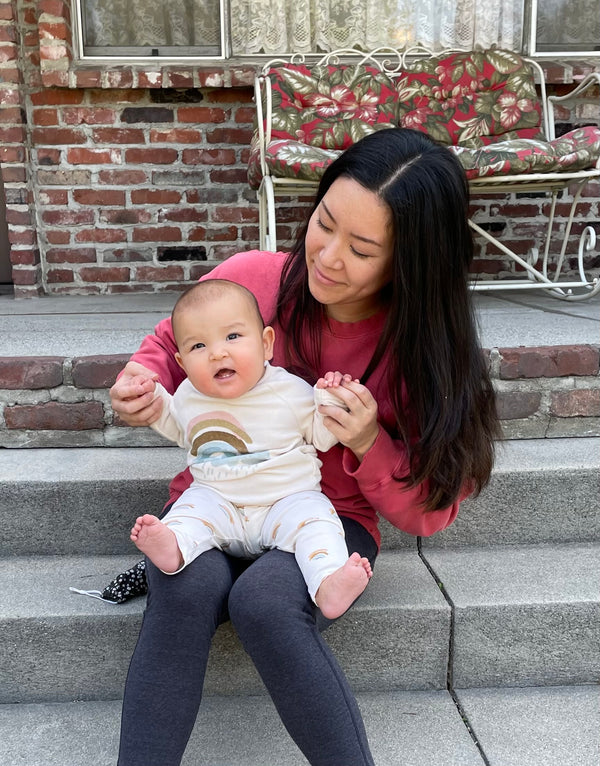
About the Author: Alice
Alice Mendoza is a copywriter and blog writer based in Los Angeles. She began writing for a baby brand while on maternity leave, and realized she had found her niche. Today, she writes exclusively within the baby space, using her BFA in Creative Writing and her own experience as a mother to guide her. When she’s not working, you can find her chasing down her toddler, going on walks around the neighborhood, or watching reality TV.
Keep Reading
-
 child-development
child-developmentAsk an Expert: The Benefits of Pretend Play with Brooke Boruff, OTR/L
Brooke Boruff, founder of Infant Insights, lends us her expertise as a pediatric occupational therapist and mom who specializes in...
Read -
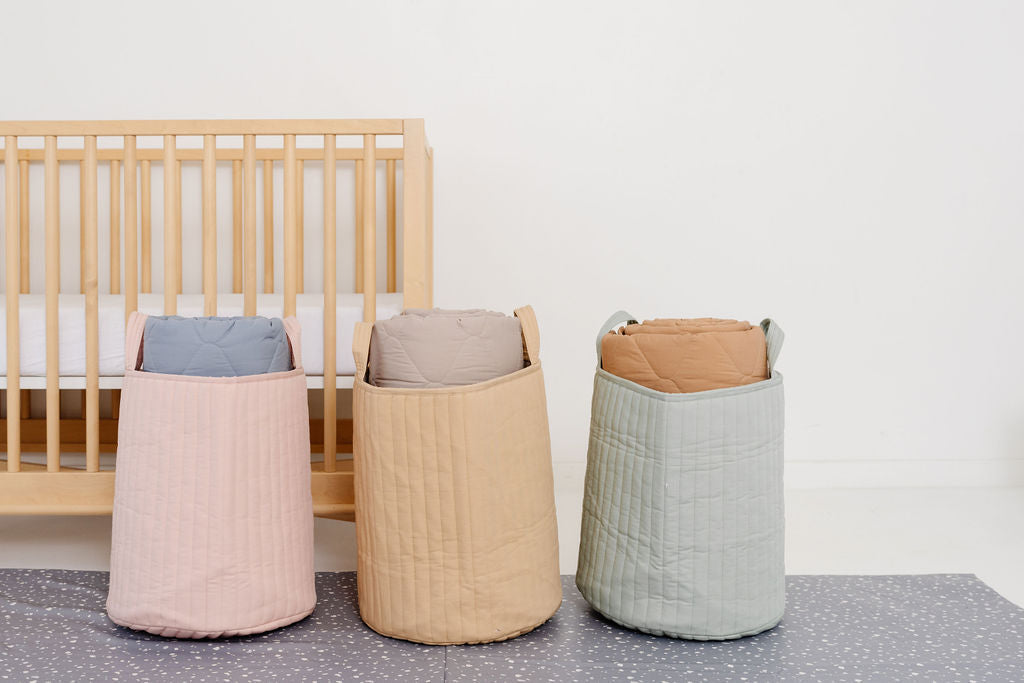 tips and tricks
tips and tricksDecluttering and Organizing Your Child's Playroom
Your child’s playroom may be a magical space of fun and imagination most of the time, but it may also...
Read -
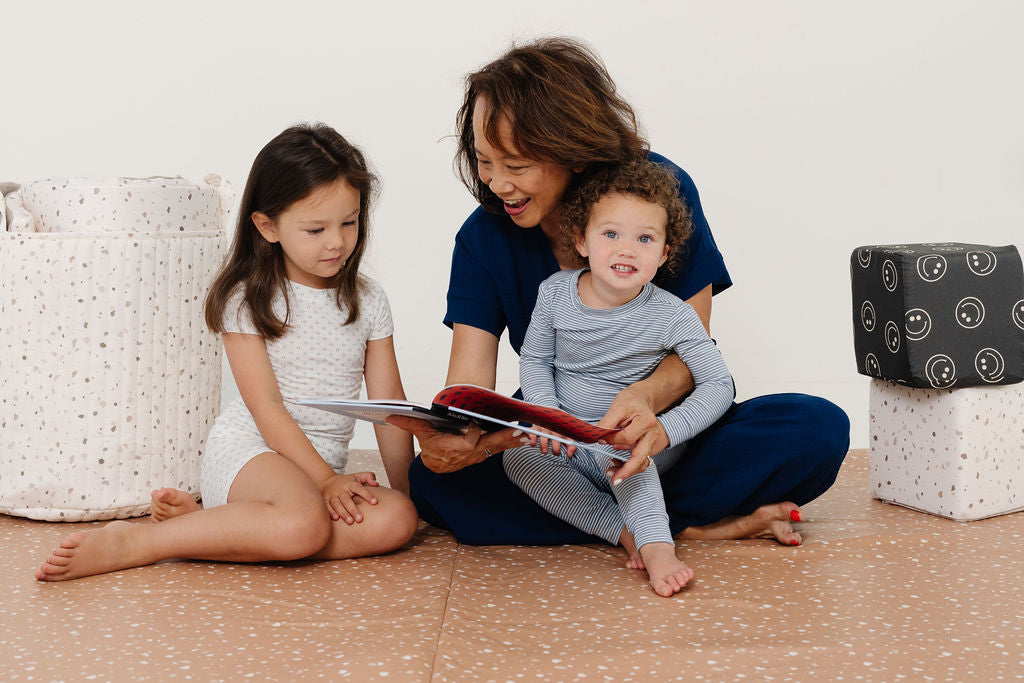 child-development
child-developmentIndoor Play Vs. Outdoor Play: Which Is Better?
Some of the best memories of our childhoods are the times we spent outdoors, running around barefoot and creating a...
Read
